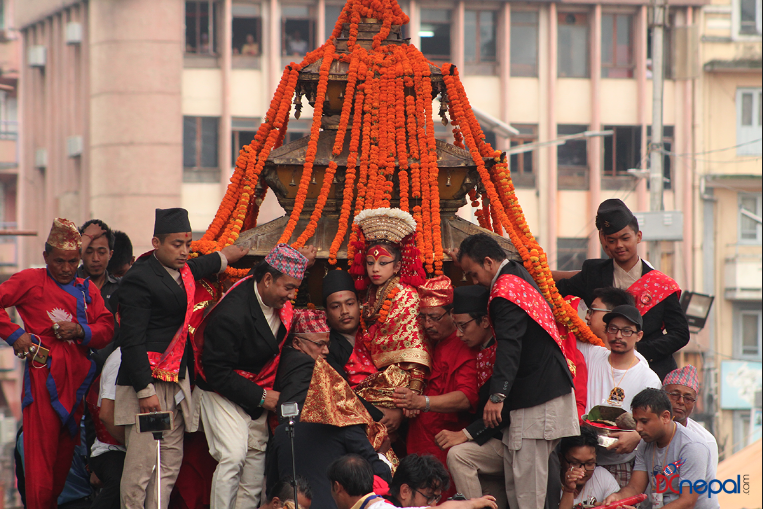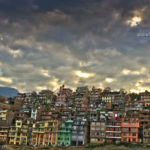The Kathmandu city of Nepal celebrates Indra Jatra today in honor of the God of Heaven or Rain, Indra. Indra Jatra is conducted in the mid or late September to mark the end of the rainy season in Nepal. It is thanks giving celebration to God Indra for the rain and good harvest bestowed upon the nation by him during the year. Along with God Indra, Lord Ganesh, Bhairab and the Living Goddess of Nepali Kumari are also worshipped during the festival.
Indra Jatra is one of the most joyous and colorful festivals of Nepal organized by the Newari community of Kathmandu. It is a Jatra, literally translated to a procession, for God Indra. On the opening day of the festival, a thirty-six feet wooden ceremonial pole called the Linga is erected along with a display of Lord Akash Bhairab, which is represented by a giant mask sending out Nepali liquors such as Jaad and Raksi. Many Newar households also display small portraits of Indra and Bhairab during the festival. The festival consists of various processions and dances, a few of which are among the highlights of the festival.
Majipa Lakhey
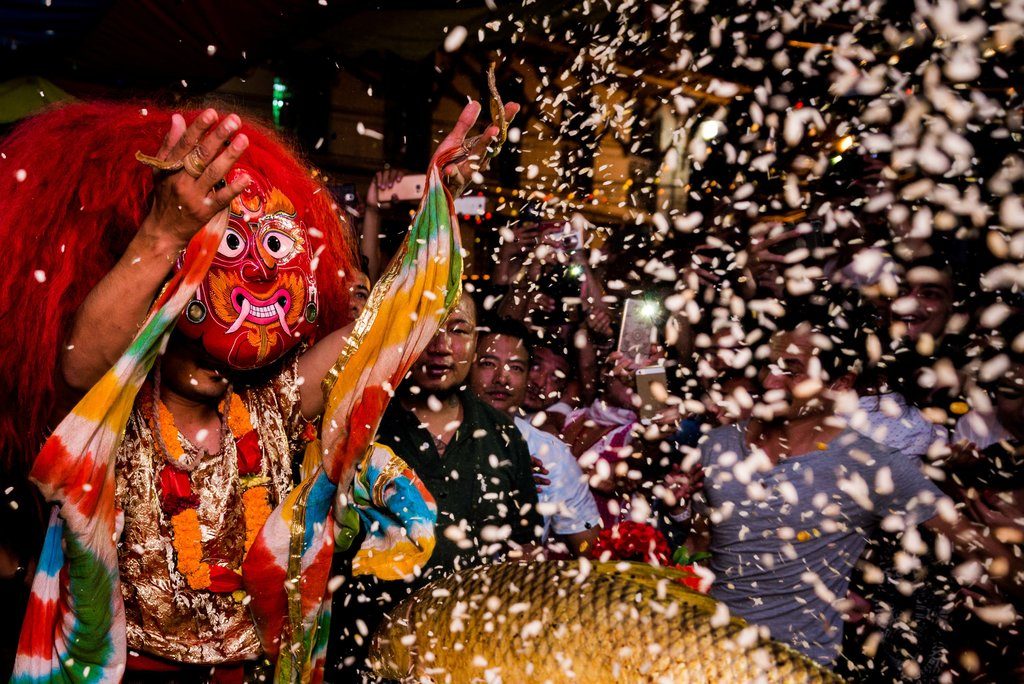
During the festival of Indra Jatra in September, the Ranjitkars perform the traditional Nepali folklore dance of the Majipa Lakhey. The Ranjitkars are said to perform without prior practice and are said to have the dance moves inherited in their genes. Majipa Lakhey is the Lakhey or demon of Majipa. He is considered the peaceful Bhairab and the protector of children from other demons. The Majipa Lakhey is believed to have settled a deal with the king of Majipa, the city where his human beloved resided, to exchange a place of residence in Majipa for the responsibility of protecting children of Majipa from demons and evils.
Pulukishi and Sawa Bhakku
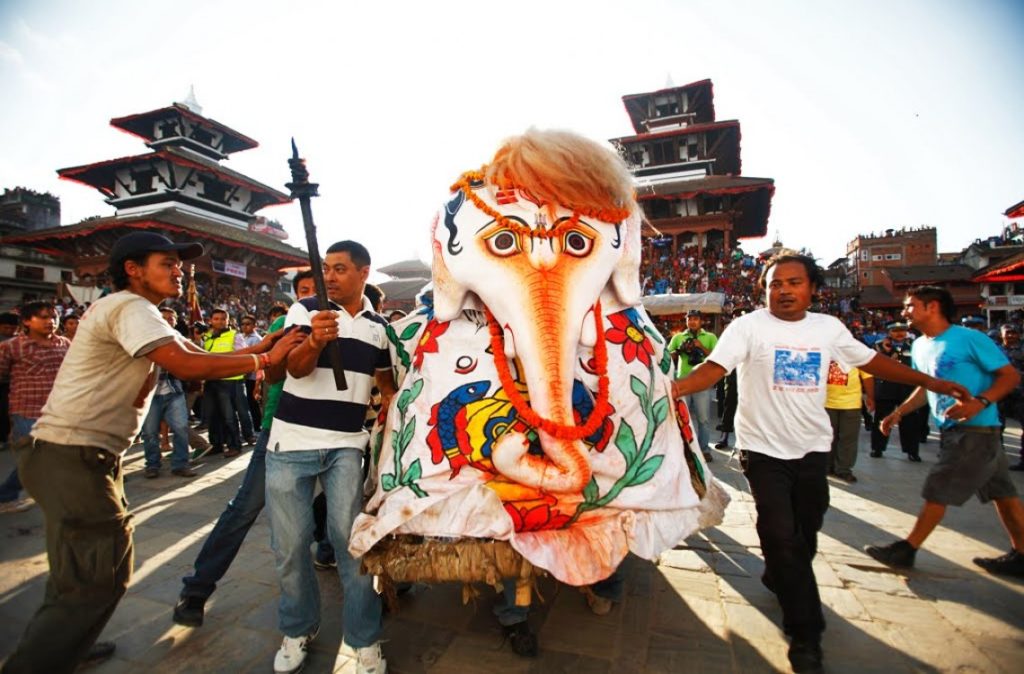
Pulukishi is a procession carried on in the streets of Kathmandu near the Durbar sites with dancers masked as Pulukishi, the white eirawat elephant of Indra. A white body with an elephant mask impersonated as the vehicle of Indra runs through the streets of Basantapur to Jyatha and hundreds of people gather around it with endless enthusiasm to witness the sight. The performers of Pulukishi perform at the Taleju Temple area in the first days of Indra Jatra and continue their performance in other parts of Kathmandu during the other days of the festival. Sawa- Bhakku is also a masked dance performed on the streets of Basantapur and other parts of Kathmandu during the festival. Big masked demons dressed in red dance aggressively up and down the streets to spread the festive mood.
Jatra/ Chariot procession
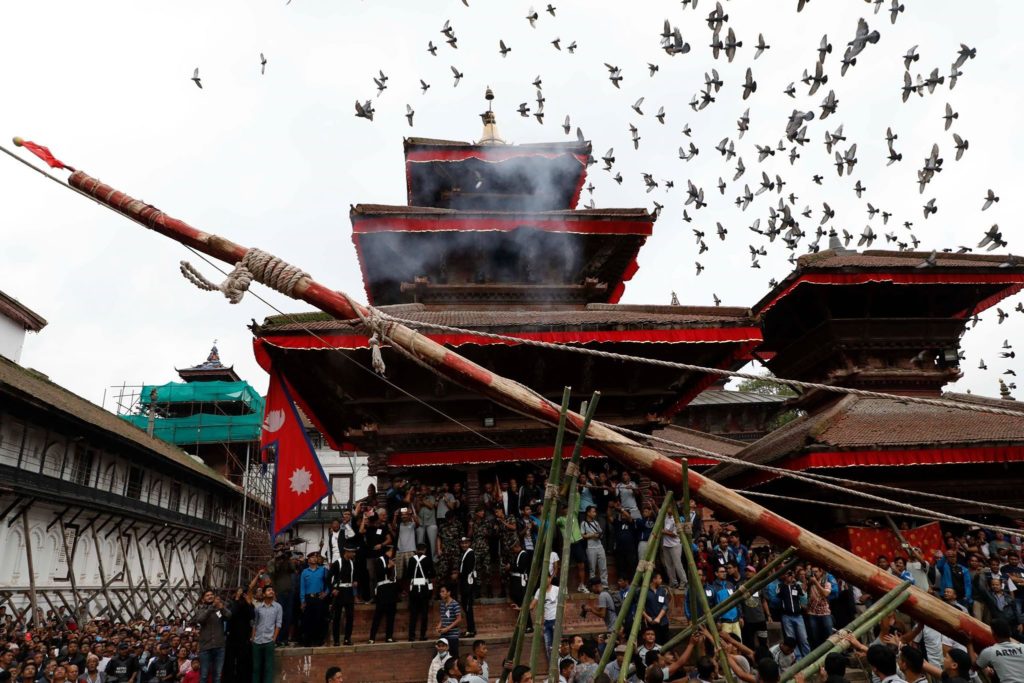
Starting from the third day of the Jatra, chariots carrying the living deities of Goddess Kumari, Lord Ganesh, and Lord Batuka Bhairab are pulled through the old streets of Kathmandu. The Jatra is led by the performers of Majipa, Pulukishi and Sawa Bhakku and begin with the pulling of Lord Ganesh’s chariot followed by the Lord Bhairab’s and Goddess Kumari’s. While Lord Ganesh and Bhairab have one-story chariots, Kumari has a three-storeyed chariot that is pulled and witnessed by thousands of her believers. It is the only time of the year that the Goddess Kumari leaves her Kumari Ghar and is travels the streets of Kathmandu to thank Lord Indra for his generosity in the rainy season. The chariots are pulled starting from the afternoon and brought back to their residence during the evenings till the eight days of the festival.
Dabu
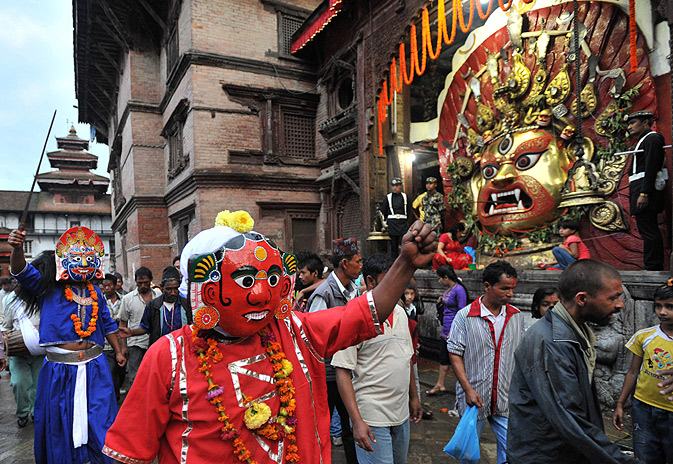
Dabu, also known as streets dances, showcasing various deities of the city such as Swet Bhairab are performed near the Hanuman Dhoka area. Dasavatar or Ten Incarnations of Lord Vishnu is staged every night during the Jatra at various durbar sites and is a highly anticipated event for locals and tourists alike. Crowds gather around the performers as the performers showcase how the ten avatars of Lord Vishnu come into existence and play their part in the mythological history.
Mata Biye

Also known as Upaku Wanegu, this is an event on the first day of Indra Jatra where family members offer butter lamps to the members of the family deceased within the past year along the old streets of Kathmandu to offer respect and in hopes of following the path of the deceased to heaven to meet their loved departed ones. Butter lamps are also offered to friends and relatives as a token of respect.
These are the highlights of the Indra Jatra that are anticipated by the onlooker every year during the festival. The festival ends with the Goddess Kumari blessing the head of the state/ governor of the state for a peaceful and harmonious ruling until the next year. The end of the Jatra marks the beginning of Dashain and Tihar, the most important festival of Nepal celebrated with family and friends throughout all parts of Nepal.
